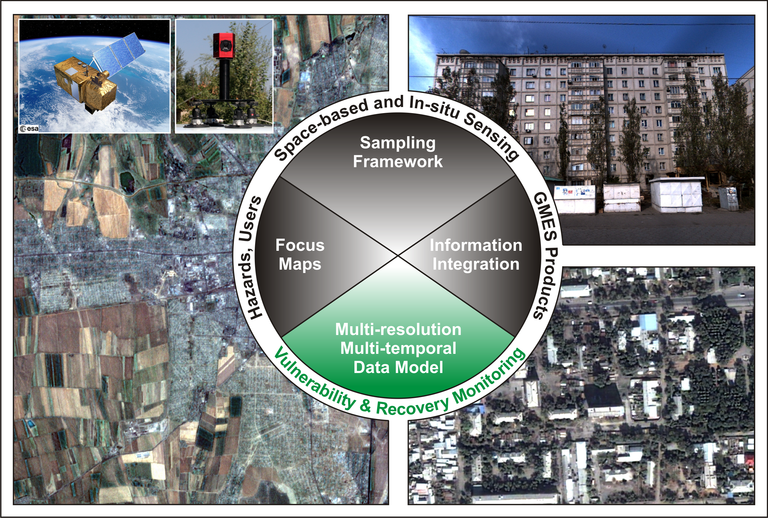Framework to integrate Space-based and in-situ sENSing for dynamic vUlnerability and recovery Monitoring (2012-2014)

Principal Investigator: Prof Emily So
Co-investigator: Michael Ramage
Research Assistants: Dr Shifeng Wang and ![Sensum Logo[1]](https://www.arct.cam.ac.uk/files/media/sensum-logo-1.jpg)
Dr Dilkushi de Alwis Pitts
Co-funded by the European Commission under FP7
(Seventh Framework Programme) THEME
[SPA.2012.1.1-04] Support to emergency response
management - Grant agreement no: 312972
In collaboration with:
Helmholtz Centre Potsdam (German Research Center for Geosciences, GFZ), Germany (Project coordinator); European Centre for Training and Research in Earthquake Engineering (EUCENTRE), Italy; Deutsches Zentrum für Luft- und Raumfahrt (DLR, German Aerospace Center), Germany; Stiftelsen Norges Geotekniske Institutt (NGI) Norway; ImageCat Ltd, UK; Institute of Geology, Earthquake Engineering and Seismology of the Academy of Sciences, Republic Tajikistan; Central-Asian Institute for Applied Geosciences (CAIAG), Kyrgyzstan
SENSUM will deliver innovative methodologies and software tools for dynamic, multi-resolution monitoring of pre-disaster vulnerability and preparedness and post-disaster recovery planning and monitoring, based on current and future space-based products and a novel approach to in-situ observation for data rich and data poor countries.
For this project, earthquake and landslide related vulnerability indicators are considered through test-cases in and outside Europe. The project responds to the urgent need to monitor and map time-dependent hazard and vulnerability, by triangulating space-based and in-situ data-collection, according to the type and extent of the natural hazard. The project will analyse the data needs of the end users through the three civil protection partners.
A novel sampling framework will be developed that guides the in-situ data collection and integration process. Novel in-situ data collection tools (e.g. omni-directional imaging) will be included. Advanced analysis and processing of current and future space-based products will enhance the approach. Uncertainties will be fully considered. Soon-to-be-released space products such as DLR Global Urban Footprint will be validated and their integration with the proposed methodologies explored. Data needs for post-disaster recovery will be addressed within the same framework, resulting in a comprehensive methodological solution to the monitoring of time-varying indicators at multiple spatial scales throughout the disaster cycle.
The consortium of 8 prominent scientific institutions and highly skilled SMEs has considerable experience in their respective fields. Many partners currently collaborate on the Global Earthquake Model Inventory Data Collection Tool (GEM IDCT). The ultimate goal is to produce a multi-resolution time varying indicator monitoring framework that applies to the whole disaster cycle. The framework is intended to· become the de-facto standard for future mapping of vulnerabilities.
The Cambridge group is the lead for work package 5 which examines Multi-scale dynamic vulnerability framework for recovery planning and monitoring. The overall objective in this work package is the integration of multi-scale dynamic vulnerability information extraction, using remotely sensed data and other geospatial tools, into early recovery planning, monitoring and evaluation methodologies.
This WP will focus on the application of remotely sensed data and geospatial tools, including ground data collection tools and sampling methodologies developed in the other WPs of this project as well as other existing tools, for the planning, monitoring and evaluation of early recovery following natural disasters. Recovery planning, monitoring and evaluation are usually carried out sector by sector (e.g., housing, logistics), independent of the disaster that has caused the disruption to the population. It is expected that the new tools this WP develops can promote collaboration between the different sectors in a positive and efficient manner.
More details can be found on http://www.sensum-project.eu/home
